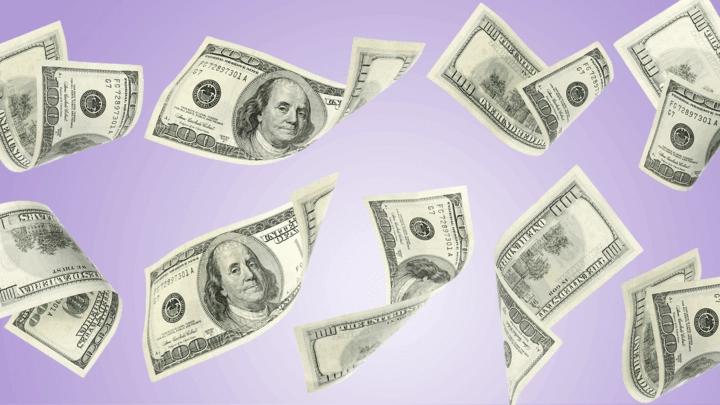Today's High-Yield Savings Rates for May 2, 2025: Up to 4.66%

Getting the best rate as a saver has been a little more difficult since the Federal Reserve started cutting its benchmark rate toward the end of 2024. Additionally, some Fed officials think more cuts could be coming later in 2025 .
With the average savings account paying 0.41%, according to the Federal Deposit Insurance Corporation (FDIC), it might feel a little bleak for savers. However, high-yield savings accounts still offer a way to get a little more yield. The best high-yield savings account pays a yield more than 10 times higher than the national average.
Indeed, the top rate from a national bank is 4.66% APY, according to DepositAccounts.com. Locally, you might be able to check with a credit union or community bank. For example, ConnectOne Bank in New York offers an APY of 4.00% if you have at least $2,500 deposited.
Today’s best savings APYs
The highest APYs available are often offered by online banks. Check for those with FDIC insurance, or if you find a credit union, make sure it’s insured by the National Credit Union Administration (NCUA). Here are today’s top rates:
- Axos Bank: 4.66% (No minimum deposit or requirements to earn the highest APY)
- Pibank: 4.60% (No minimum deposit or requirements to earn the highest APY)
- Peak Bank: 4.44% (a $100 deposit required to initiate an account)
- Bread Savings: 4.40% (a $100 deposit required to open an account)
- First Foundation: 4.40% (a $1,000 deposit required to initiate an account)
- My Banking Direct: 4.40% (a $500 deposit required to open an account)
- TIMBR: 4.40% (a $1,000 deposit required to open an account)
- Vio Bank: 4.36% (a $100 deposit required to open an account)
- BrioDirect: 4.35% (a $5,000 deposit is required to open an account)
- EverBank : 4.30% (No minimum deposit or requirements to earn the highest APY)
Historic savings and Fed rate trends
By monitoring past interest rates, you can gain insight into what to anticipate with high-yield savings accounts. These rates fluctuate regularly due to various market conditions and influences; however, observing them allows you to understand the effects of Federal Reserve choices on saving yields.
Why do not all savings accounts offer high yields?
A HYSA is a variety of savings account. It shares numerous regulations with conventional savings accounts. However, the primary distinction lies in the interest rate that financial institutions such as banks or credit unions offer on these high-yield accounts.
Banks and credit unions establish their interest rates according to current market trends and the objectives of the financial organization. The return these institutions offer on savings accounts represents funds paid out to customers; hence, they aim to optimize profitability.
How HYSAs work
High-yield savings accounts are specialized deposit accounts created to offer an interest rate significantly above the national average. The amount of profit financial institutions aim to generate depends on the difference between the yield paid out to account holders and the interest earned from lending money to borrowers.
Be mindful of the limitations associated with High Yield Savings Accounts (HYSAs). For instance, certain savings accounts restrict the number of withdrawals and transactions allowed per month. Additionally, others may necessitate a minimal initial deposit or impose caps on your Annual Percentage Yield (APY) depending on your account balance.
The functioning of conventional savings accounts
Conventional savings accounts function similarly to high-yield savings accounts (HYSAs). Nonetheless, in contrast to high-yield accounts which are typically available only through internet-based institutions without physical locations, conventional savings accounts are generally offered by banks that possess actual branch offices.
Sometimes, you may achieve higher-than-average returns from conventional accounts offered by local credit unions and neighborhood banks that have brick-and-mortar branches. However, typically, the most favorable interest rates are available through purely digital institutions.
Conventional savings accounts could come with restrictions on transactions, minimum deposit demands, and varying interest rates depending on your account balance.
HYSA dependency on Fed rate
The Federal Reserve meets eight times a year to announce its benchmark federal-funds rate (sometimes called the Fed rate). This is the rate banks charge each other for short-term lending. High-yield savings accounts are highly dependent on the Fed rate.
As the targeted interest rate increases, savings yields typically go up too. This can be advantageous for savers since they may earn greater returns by keeping their funds in banks or credit unions. Conversely, when the Federal Reserve reduces its key interest rate, yields usually decrease.
Savings yields often vary consistently, yet they tend to experience substantial shifts particularly following the Federal Reserve’s announcement regarding an adjustment in its key interest rate.
0 Response to "Today's High-Yield Savings Rates for May 2, 2025: Up to 4.66%"
Post a Comment